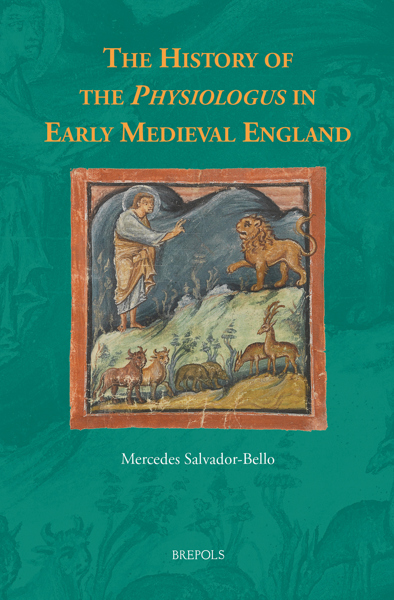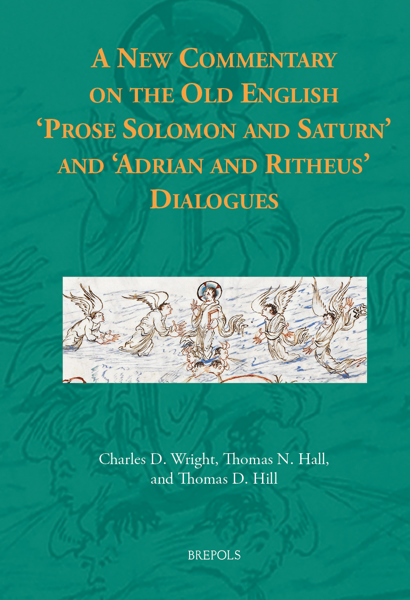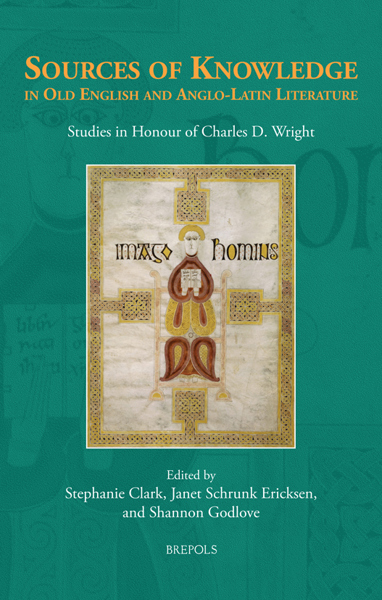
The History of the Physiologus in Early Medieval England
Mercedes Salvador-Bello
- Pages: 453 p.
- Size:156 x 234 mm
- Illustrations:15 b/w, 9 col.
- Language(s):English
- Publication Year:2025
- € 110,00 EXCL. VAT RETAIL PRICE
- ISBN: 978-2-503-59840-6
- Hardback
- Available
- € 110,00 EXCL. VAT RETAIL PRICE
- ISBN: 978-2-503-59841-3
- E-book
- Available
The Physiologus is the ancestor of the bestiary and a major literary work linking Western and Eastern literary traditions. This monograph offers a first substantial exploration of the Physiologus in early medieval England, in both Latin and Old English texts.
« Le présent livre apporte quelque chose de vraiment nouveau à la recherche sur le Physiologus latin en présentant deux manuscrits anciens qui avaient été jusqu’ici négligés. » (Caroline Macé, dans Plekos, 27, 2025, 561)
Mercedes Salvador-Bello is full Professor of English Literature at the University of Seville. In addition to numerous articles on Old English and Insular Latin literature, she is the author of Isidorean Perceptions of Order: The Exeter Book Riddles and Medieval Latin Enigmata (2015), which was awarded ‘Best First Monograph’ (ISAS / ISSEME 2017) and ‘Premio Enrique García Díez’ in English Literature (2016), granted by the Spanish Association of Anglo-American Studies (ADEDEAN).
The Physiologus is the ancestor of the bestiary, a collection of chapters describing animal qualities and behaviours, usually with an allegorical meaning, which proliferated especially in England in the late Middle Ages. While much scholarly attention has been directed to the bestiary, the history of the transmission of the Physiologus has hardly been investigated. Evidence of the circulation of this treatise in the early medieval period is certainly scanty, since only two brief versions dating from this period have been preserved, one in Old English and another one in Latin. However, this monograph shows further proof of the knowledge of the Physiologus in Anglo-Saxon England. It also reveals the relationship of the only two surviving texts and their connection to the main Continental recension of the time. This study therefore demonstrates that the popularity of bestiaries in the later Middle Ages was largely due to the prominence that its predecessor, the Physiologus, enjoyed in the preceding period.
Introduction. The Scope, Aims, and Structure of this Book
Part I. Knowledge of the Physiologus in the Seventh and Eighth Centuries
Chapter 1. The School of Canterbury
Chapter 2. The Liber monstrorum
Chapter 3. Aldhelm’s De virginitate
Chapter 4. Aldhelm’s Enigmata
Chapter 5. Eusebius’s Enigmata
Part II. The Physiologus in the Ninth and Tenth Centuries
Chapter 6. The Laud and Arras Physiologi
Chapter 7. The Phoenix
Chapter 8. The Physiologus in the Context of the Benedictine Reform
Part III. The Two Anglo-Saxon Physiologus Versions
Chapter 9. The Corpus Physiologus
Chapter 10. The Exeter Book Physiologus
Conclusion. Reconstructing the History of the Physiologus in Early Medieval England
Appendices
Appendix 1. Diachronic Chronology of the Physiologus, Related Works, and Manuscripts, with Relevant Works and Cultural Manifestations
Appendix 2. Chronology of Manuscripts Containing the three Main Latin Versiones and their Related Texts
Appendix 3. The Order of the Chapters of the Laud and the Arras Physiologi, as Compared to Versio Y.
Appendix 4. Annotated Edition and Translation of the Corpus Physiologus
Appendix 5. Further Manuscript Images of the Physiologus
Works Cited
Index of Manuscripts
Index of Animals, Plants, and Creatures related to the Physiologus
General Index




